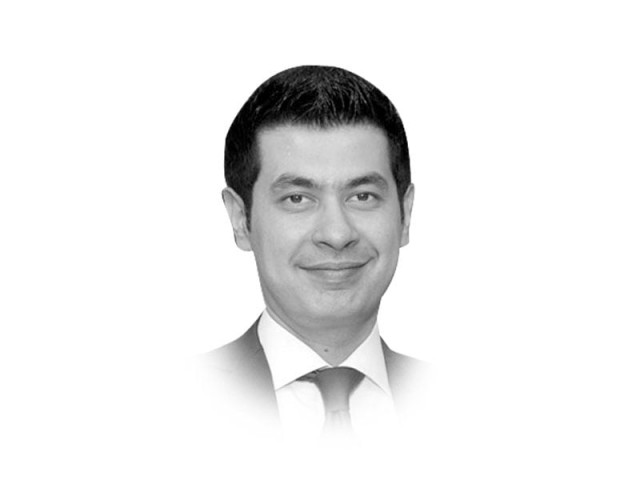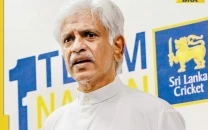For a few more dollars
Instead of hard cash, Pakistan could have bargained for something more long-term and sustainable.

The writer is a media consultant and trainer, currently based in Cairo, Egypt. He Tweets @aasimzkhan
The market is in a frenzy. Long-time hoarders are opening up the coffers, trying to cover future losses. Greedy investors are picking up the fresh greenbacks and traders, well, they’re having a field day, aren’t they?
But it didn’t make sense for a few days. Nothing about Pakistan is reason enough for the currency to record any kind of gain. There’s not much happening for Pakistan on the horizon either –– if all things go according to plan, it should be another horrible year.
And finally the cat jumped out of the bag –– the Saudis had come to the rescue of the PML-N government, with a massive $1.5 billion gift. Obviously, talks for the monies had been underway for a while and once in the final stages, the market started reacting.
So now, we’re talking about a resurgent economy, a strong currency, and other terms which actually are miles away from the truth. Pakistan remains in a shambles and a total collapse has only been postponed by yet another life-saving Saudi injection. But let’s not kid ourselves, Shylock will ask for his pound of flesh (at home and abroad), and Pakistan is no Antonio.
What does Riyadh want now? As it so happens, the royal family in Riyadh is under a fair amount of pressure. It has been losing support in the Middle East of late, especially with regard to the Syrian crisis and the instability in Egypt. At the same time, its relationship with the United States has also been in rough waters recently.
First, the Middle East. One of Riyadh’s greatest worries is the creation of a Shia crescent, able to somehow threaten the dominance of Saudi Arabia in the Gulf Cooperation Council (GCC). As the situation in Syria worsened, the Saudis decided to use their Libyan formula of using proxy militias to topple Bashar alAssad. Yet, the Syrian army, backed by Tehran, Moscow and of course, Hezbollah, dug in their heels and as the war raged on, it soon became apparent that the Saudis were funding, to put it mildly, al Qaeda-like militants. Yet, Washington remained quiet.
The Saudis were still desperate to break the Syria-Iran-Hezbollah axis and they literally begged the United States and Nato to intervene. However, Tel Aviv called time out on this intervention out of fear of Syria falling to al Qaeda and other jihadists. At the same time, the impasse on the Iranian nuclear programme happened and it became apparent that the status quo had finally been broken.
Washington’s silence on Riyadh’s funding of terrorism has been terrifying, but its reasons have always been economic. However, US demands for imported energy are waning. Add to this, Tel Aviv’s fears of Saudi-backed militants reaching its borders, and the relationship between Saudi Arabia and the United States is now fast unravelling.
It is under these developments that the House of Saud has turned to Pakistan. The reasons are clear: to ensure that a Muslim country outside the Middle East remains firmly in its grasp. And Pakistan, in true form, has responded. First came the U-turn on Syria: Pakistan has traditionally maintained a stance of non-alignment when it comes to matters in the Middle East, but in mid-February, following talks between PM Nawaz Sharif and Saudi Crown Prince Salman bin Abdul-Aziz alSaud, it changed to “the formation of a transitional governing body with full executive powers enabling it to take charge of the affairs of the country”. Pakistan also called for ‘an immediate withdrawal of all foreign armed forces and militants from Syrian territory. Many believe that this is a reference to Iran and Hezbollah.
What the House of Saud wants from Pakistan is speculative at best since Pakistan cannot directly influence events in the Middle East. However, Riyadh can take arms from Pakistan and funnel them to jihadists in Syria.
Pakistan could have played it so differently. While towing the Saudi line was, perhaps, inevitable, it could have learnt from its past mistakes (read: Afghan jihad) and instead of hard cash, bargained for something more long-term and sustainable. Yet, here we are, for a few dollars more.
Published in The Express Tribune, April 2nd, 2014.
Like Opinion & Editorial on Facebook, follow @ETOpEd on Twitter to receive all updates on all our daily pieces.



















COMMENTS
Comments are moderated and generally will be posted if they are on-topic and not abusive.
For more information, please see our Comments FAQ